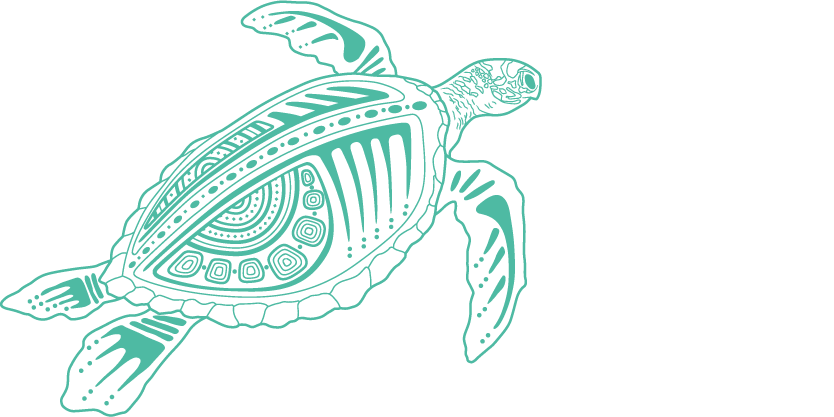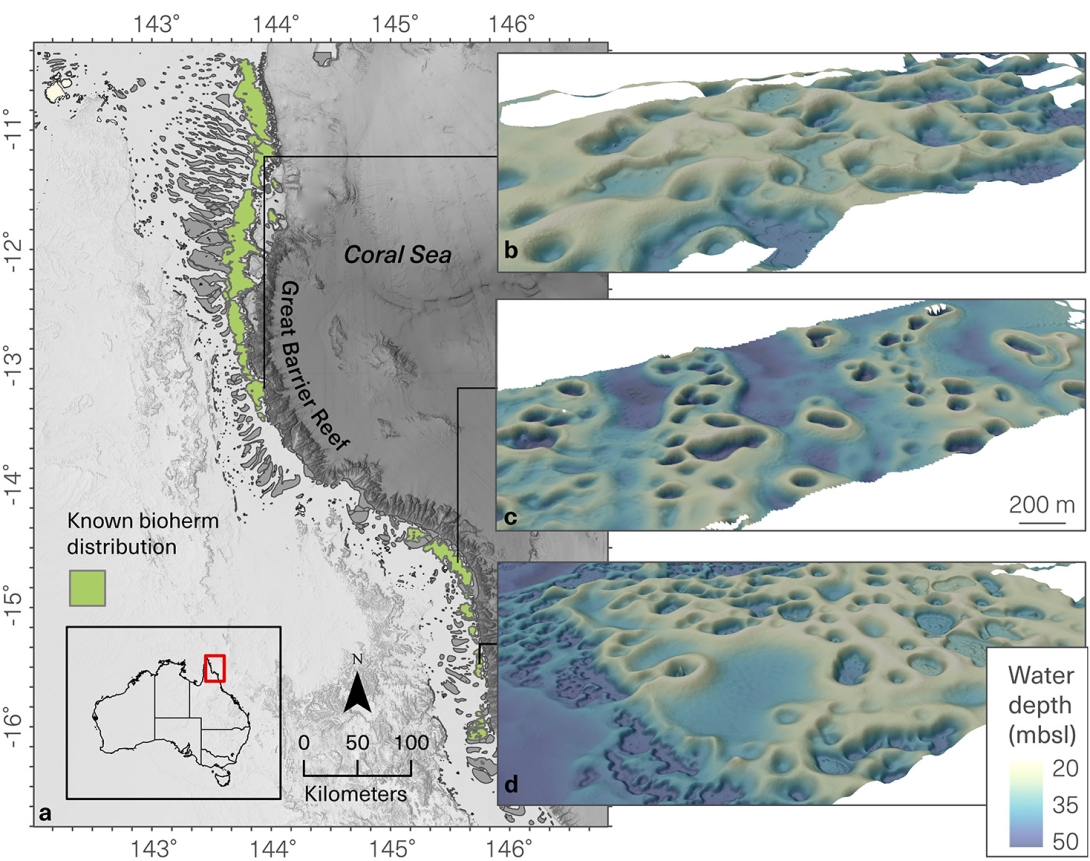Halimeda bioherms are massive underwater structures consisting mainly of the accumulated remains of calcareous green algae (genus Halimeda).224 They form ring-shaped mounds, up to 20 metres thick and 300 metres across, that are linked in honeycomb-like networks of decreasing complexity from east to west across the continental shelf.1091 The most extensive are found inside the northern Ribbon Reefs, where cold, nutrient-rich water from the deep ocean is pushed between the outer reefs by tidal jets (Figure 2.7),201,226 but similar formations are found elsewhere, for example, in the Swain Reefs.206,224 The northern bioherms are the most extensive actively accumulating Halimeda deposits in the world, contributing to outstanding universal value from a geological and geomorphological perspective 227 (Section 4.2). They cover an area of approximately 6000 square kilometres of seabed, about 26 per cent of the narrower northern shelf, which equates to an area roughly equivalent to that of the shallow coral reefs in this region.198,218
The bioherms are overlain with meadows of living vegetation, dominated by Halimeda, but includes other algae and seagrasses.225 Thirteen species of Halimeda are found in the Region, and the meadows are dominated by the same species that grow on nearby coral reefs.228 Some species can grow in very low light, occurring down to at least 150 metres deep where they occasionally form cascading vertical ‘draperies’.193,229 Halimeda also grows in extensive meadows behind the Ribbon Reefs and in the central Reef, particularly in deeper waters (60 to 100 metres) in areas where bathymetry favours upwelling.224,227 Halimeda bioherms have become a subject of research interest because of their significant impact on the carbon cycle and potential importance in cross-shelf nutrient cycling.231 Halimeda grows very fast, producing a new segment every few days, and has physical and chemical defences against herbivory,232,233 making it a highly productive source of calcium carbonate.227 Unlike coral reefs, the bioherms have formed entirely since the peak of the most recent ice age, accumulating up to 4 times more carbonate sediment than nearby coral reefs during this time.234 The relative lack of knowledge on the ecological condition (and trend in condition) of these features represents a key knowledge gap.



